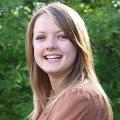
A DAIRY farm in Somerset held an open day earlier this month - in a bid to share their success with crossbreeding.
The Edmunds family, from Ashcott Farm near the Somerset Levels, say improved health and fertility has come from crossbreeding their herd of Holstein cattle.
Their journey into crossbreeding was a gradual process that started more than 10 years ago with the introduction of the VikingRed to their herd and the eventually introducing the Montbéliarde and adopting the three-way ProCROSS programme (a dairy crossbreeding programme) around six years ago.
The heavy clay land on the farm was not particularly suited to a grazing modern holstien, so the Edmunds family were keen to produce an animal which was robust enough to deal with grazing and walking long distances, that would still produce plently of milk.
The decision taken by parents, Paul and Janet, and their sons, Lee and Sam, has taken them on a journey into a full three-way rotation which alternates the Holstein, VikingRed and Coopex Montbéliarde breeds.
Today, they have a 350-head herd which yields 8,500kg at 4.2% fat and 3.3% protein, has a rolling average somatic cell count of 130,000 cells/ml and an impressive pregnancy rate of 40%. It calves in a three-month autumn block, from the end of August until late November, and sells milk through Muller to Tesco.
“Our best cows may not be as milky as before, but the bottom of the herd is far better, and the average yield is up," said Paul.
“We have a lot less mastitis and lameness, better feet, far fewer calving problems, and the newborn calves have better strength and health."
Lee added: “The cows also carry more condition and have fewer transition problems.
"We don’t have so many amazing yielders, but we also have far fewer problem cows. Our aim now is to bring up the bottom 25%.”
The stock bull has also become less important, and Sam says he can envisage a time when there are none on the farm.
Confidence in the cows’ fertility has also led to a dropping off in pregnancy diagnosis which plays less of a role than ever before.
“We need 200 sexed straws to produce 110-120 heifers, and they are used up in two weeks,” said Sam. “We don’t pick out the best cows for breeding replacements – it’s more a case of avoiding the worst.
“We PD (pregnancy diagnosis) less and less as we get more confident in the cattle. We leave at least 50 days before the vet will PD as we think we’ll pick up returns at 40 days ourselves.
“We don’t like the extra stress of PD’ing. It’s to find one or two problem cows, and when it goes down to that level, it’s not worth the hassle.”
The end result for the Edmunds family is greater satisfaction in farming, a better work-life balance, and a far better lifespan for their cows. Now up to full capacity for their farm, they say they are selling some heifers, grazing for a longer season, producing more milk from forage and would not switch back to pure breeding.
Sven Johnson, from ProCROSS, spoke during the open day.

He said the Holstein breed is the 'best cow in the world' and plays such an integral role in this structured breeding programme and must be used every third generation.
However, the limitations of the Holstein – which can compromise its health and longevity – were offset by the input from the VikingRed and Montbéliarde breeds.
He said these two red and white breeds injected a combination of excellent health – especially seen in the hooves, fertility, and udder of the VikingRed – and body condition and fertility, for which the Montbéliarde was renowned.
Combined with the superb production potential and udder conformation across the Holstein breed, he said this was ‘a marriage made in heaven’.
He said the Holstein breed was too important in the rotation to be further watered down, although he warned its inbreeding was getting worse.
“The Holstein is highly inbred, which causes inbreeding depression to silently steal dairy farmers’ profits – often through traits which are not readily noticeable such as embryo loss and disease resistance,” he said.
“Pure-breeding is very important and essential for the ProCROSS programme. But in a world of 70 million dairy cows, 65 million are black and white. We don’t need as many as that."



Comments: Our rules
We want our comments to be a lively and valuable part of our community - a place where readers can debate and engage with the most important local issues. The ability to comment on our stories is a privilege, not a right, however, and that privilege may be withdrawn if it is abused or misused.
Please report any comments that break our rules.
Read the rules here